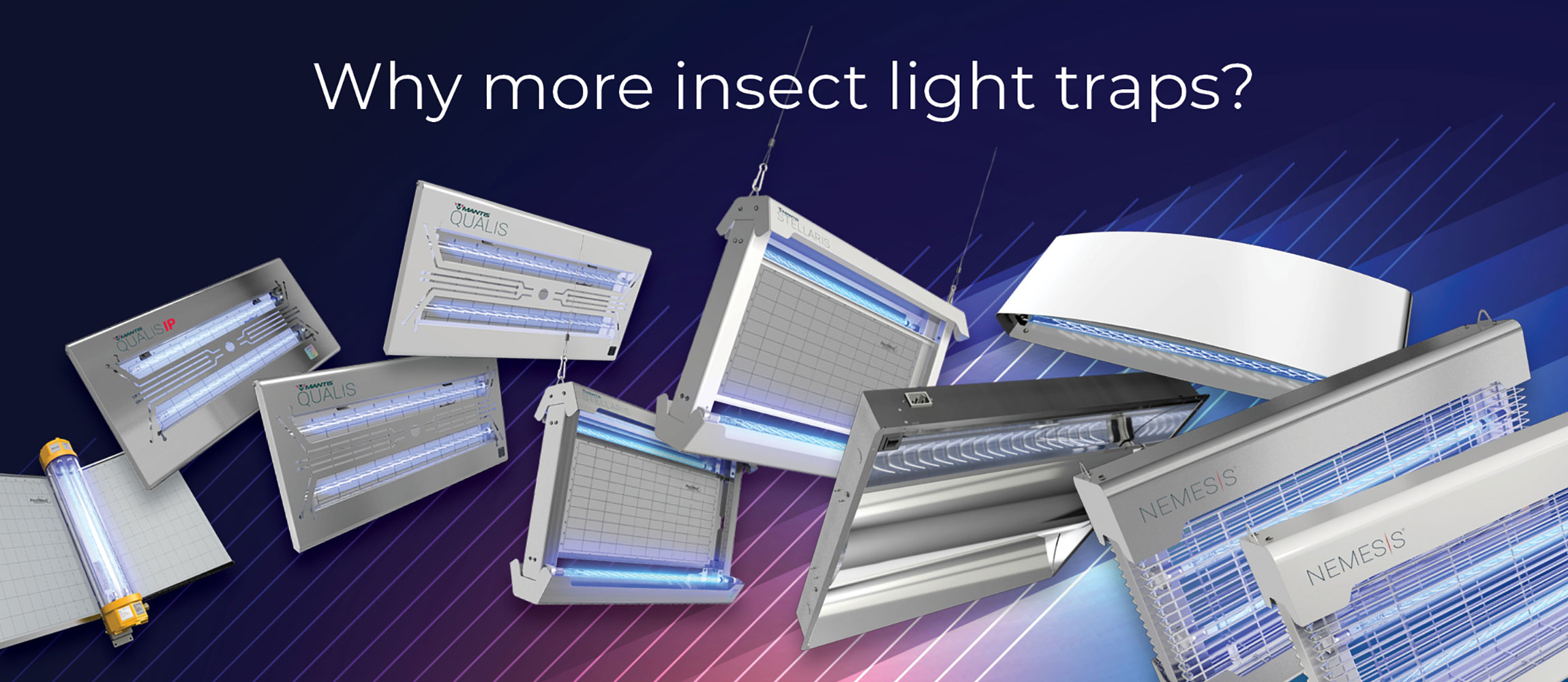By Dr. Stuart Mitchell
Quick takeaways1
• UVA light drops off fast, flies won’t chase what they can’t see
• Effective phototaxis starts at ~0.01 W/m²
• Quantum® X insect light traps cover 9 to 19 m²
• More insect light traps = more coverage and more captures
• Science-backed placement beats guesswork
This article answers the question, “why place more insect light traps?” by exploring the behavioral reasoning behind the strategic placement of multiple insect light traps within flying insect pest-sensitive environments. By understanding UVA light emission and the phototactic response threshold of House fly, pest management professionals (PMPs) can optimize insect light trap deployments for maximum efficacy.
UVA light fades fast: why insect light traps have limits1
Coverage is physically and behaviorally limited1
• For effective UVA attraction, large spaces require more LED insect light traps
• E₁ is the irradiance at 1 meter (0.06 W/m²)
• Eth is the phototactic response threshold (0.01 W/m²)
• For an insect light trap emitting 0.06 W/m² at 1 meter, the modeled area of coverage is:
• 180° wall mount: A = ½π × (E₁ / Eth)
• A ≈ 9.4 m² or 101.4 ft²
• 360° central mount: A = π × (E₁ / Eth)
• A ≈ 18.8 m² or 202.9 ft²
Environmental and spatial factors reduce effectiveness
More insect light traps = more coverage, more captures
Trap smarter: aligns with IPM principles
Conclusion
Placing more insect light traps is not a matter of excess, it is a data-driven approach to meet phototactic response thresholds throughout complex, real-world environments. By scientifically modeling irradiance decay and House fly (and other flying insect species) behavior, PMPs can deploy more insect light traps, which equals more coverage and more captures.
1Based upon content and modeling from the PestWest brief “Behind the Specs: Quantum® X UVA Coverage” and data from the laboratory study, “Efficacy evaluation of the Chameleon Qualis fly trap against house flies (Musca domestica) under laboratory conditions” (Study Code: 21/335, i2L Research Ltd., 2021).





